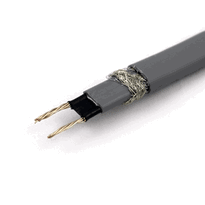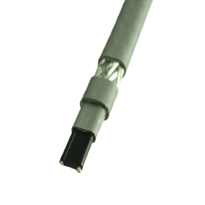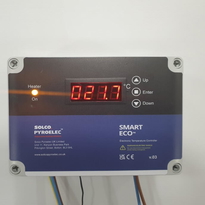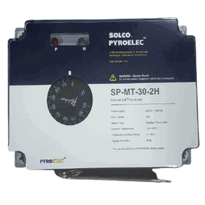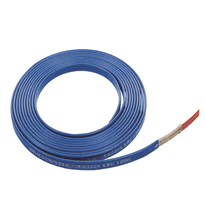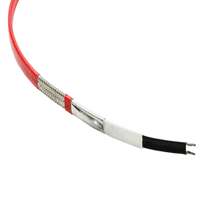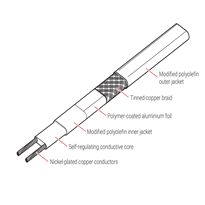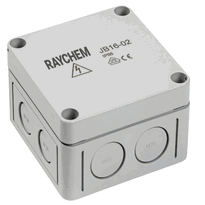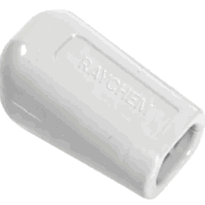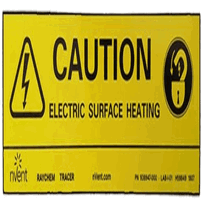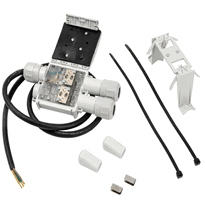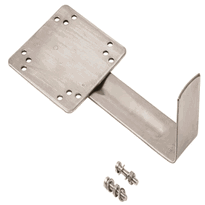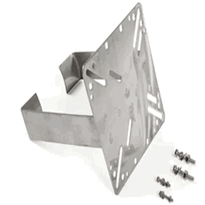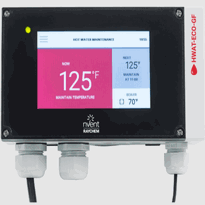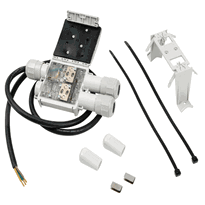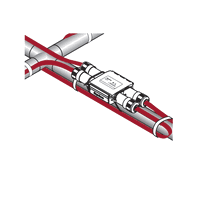Electric Heat Cable for Water Pipes
Electric heat cables designed for water pipes are self-regulating or constant wattage systems that prevent freezing by supplying controlled heat directly to vulnerable pipes. Proper installation involves securing the cable along the bottom of the pipe, avoiding overlaps to prevent overheating, and maintaining adequate safety clearances. Ensuring correct thermostat placement and appropriate insulation is essential for efficient operation. These cables perform effectively in cold UK temperatures and require regular inspection to prevent damage and ensure optimal performance. Continuing with this information will provide detailed guidance on selecting, installing, and maintaining the most suitable heat cable for specific applications.
Types of Heat Cables and How They Work
There are primarily three types of electric heat cables used for water pipe freeze protection: self-regulating, constant wattage, and heat tape.
Self-regulating cables adjust their heat output based on the ambient temperature, which helps conserve energy and prevents overheating. They contain a conductive polymer core whose resistance changes with temperature, allowing them to increase or decrease heat as needed. This adaptability makes them suitable for variable conditions. Self-regulating cables are also safer for installation because they are less likely to cause hot spots or damage the pipe surface. These systems typically include thermostatic controls to further optimize temperature regulation.
Constant wattage cables, in contrast, provide a consistent level of heat regardless of the environment. They feature resistive wire wrapped in insulation and typically require external controls to prevent overheating or overloading.
Heat tape is a more flexible version of resistive cable that's usually designed to wrap around pipes for light-duty applications. Due to its flexibility and ease of installation, it's often used in situations where moderate heating is sufficient.
Understanding these options will assist you in selecting the most suitable cable type based on your specific application needs, energy efficiency goals, and durability considerations.
Proper Installation Techniques and Safety Tips
Proper installation of electric heat cables requires meticulous preparation and adherence to safety protocols to ensure effective freeze protection and prevent hazards.
First, inspectors should clear the pipe surface and surrounding area of any sharp edges, combustible materials, and debris that could damage the cable or pose a fire risk.
Before installing new cables, it's essential to remove any pre-existing heat cables to avoid interference and potential overheating. Electrical conditions should be carefully assessed to confirm proximity to a properly grounded, GFCI-protected outdoor outlet.
The minimum installation temperature should be at least -10°C to maintain cable flexibility and ease of installation. During fitting, secure the cable with specialized adhesive tape every 15 to 20 centimeters, ensuring the minimum bend radius of 2.5 centimeters is maintained to prevent damage.
Proper positioning of temperature sensors is critical, as is avoiding cable overlaps, to ensure safe and reliable operation.
Additionally, understanding the thermal protection properties of the insulation material can help optimize system performance and safety.
Following these guidelines will optimize the effectiveness of the heat cable system while maintaining safety standards.
Optimal Placement and Pipe Orientation
To achieve optimal freeze protection, it's crucial to carefully consider the placement of electric heat cables in relation to pipe orientation, as their positioning directly impacts heat transfer efficiency and system reliability.
For horizontal pipes, position the heat cable along the bottom, preferably at the 4 or 8 o’clock positions, to ensure maximum contact and effective heat conduction.
On vertical pipes, place the cable on the side exposed to the coldest conditions, typically the outward-facing sections.
Cables should run parallel along straight sections and be wrapped in a spiral pattern around curved areas, maintaining consistent spacing to promote uniform heating.
Securing the cable with tape or ties every 15 to 30 centimeters prevents movement and ensures proper contact.
Coverage must avoid gaps exceeding 15 centimeters to reduce the risk of freezing.
Proper placement of the heat cable is essential for uniform heating and reliable freeze protection across a range of pipe configurations, helping to prevent costly damages and maintain system integrity.
Additionally, choosing the right insulation material can enhance the heat retention and efficiency of the system.
Operating Conditions and Maintenance Strategies
Electric heat cables are engineered to operate within specific temperature ranges and electrical parameters that ensure safety and efficiency. These cables are typically effective down to -38°C, providing dependable protection against pipe freezing in extremely cold conditions. They can withstand temperatures up to 250°C, with some specialised variants reaching as high as 260°C, accommodating a wide range of application needs. Self-regulating cables adapt their heat output in response to ambient temperatures, enhancing energy efficiency and reducing the risk of overheating. Proper installation is essential; cables should be securely affixed along pipes, avoiding overlaps, and combined with appropriate thermal insulation to optimise performance. Additionally, their longevity depends on proper usage, and following proper maintenance protocols can significantly extend their lifespan. Regular maintenance involves inspecting cables for physical damage, verifying the integrity of insulation, testing electrical continuity, and confirming that thermostats operate correctly. Following these protocols helps maintain safety, extend the lifespan of the system, and ensure efficient operation.
Practical Benefits and Application Areas
Practical Benefits and Application Areas of Electric Heat Cables
Electric heat cables provide significant advantages when it comes to preventing pipe freezing and avoiding associated water damage. These cables are highly effective at maintaining water pipe temperatures during cold weather, thereby reducing the likelihood of pipe bursts—a costly problem that can result in substantial repairs and water wastage. They are also designed with safety features such as UL and CSA certifications, ensuring their proper and safe operation in various settings. They are suitable for a variety of settings, including residential properties such as basements and outdoor taps, as well as commercial environments like rooftops and industrial pipelines. Their adaptability allows for installation in complex or tricky layouts, including bends, valves, and irregularly shaped structures.
The following table outlines key application areas, benefits, and typical uses:
Application Area |
Benefit |
Typical Use |
| Residential | Prevents freezing, ensures continuous water supply | Basements, outdoor taps, crawl spaces |
| Commercial | Protects infrastructure, maintains operational integrity | Rooftop pipes, industrial pipelines |
| Versatility | Customisable installation options for complex configurations | Bends, valves, irregular shapes |
Conclusion
Proper selection, installation, and maintenance of electric heat cables are essential for effective pipe protection against freezing temperatures. Understanding the various types of cables, ensuring correct placement based on pipe orientation, and following safety protocols are key to optimising performance and extending the lifespan of the system. Regular inspections and appropriate operational practices help to minimise risks and maximise energy efficiency. Applying these best practices ensures reliable, cost-effective temperature control, safeguarding water pipes and preventing costly damage caused by freezing, particularly in colder climates or exposed environments.








